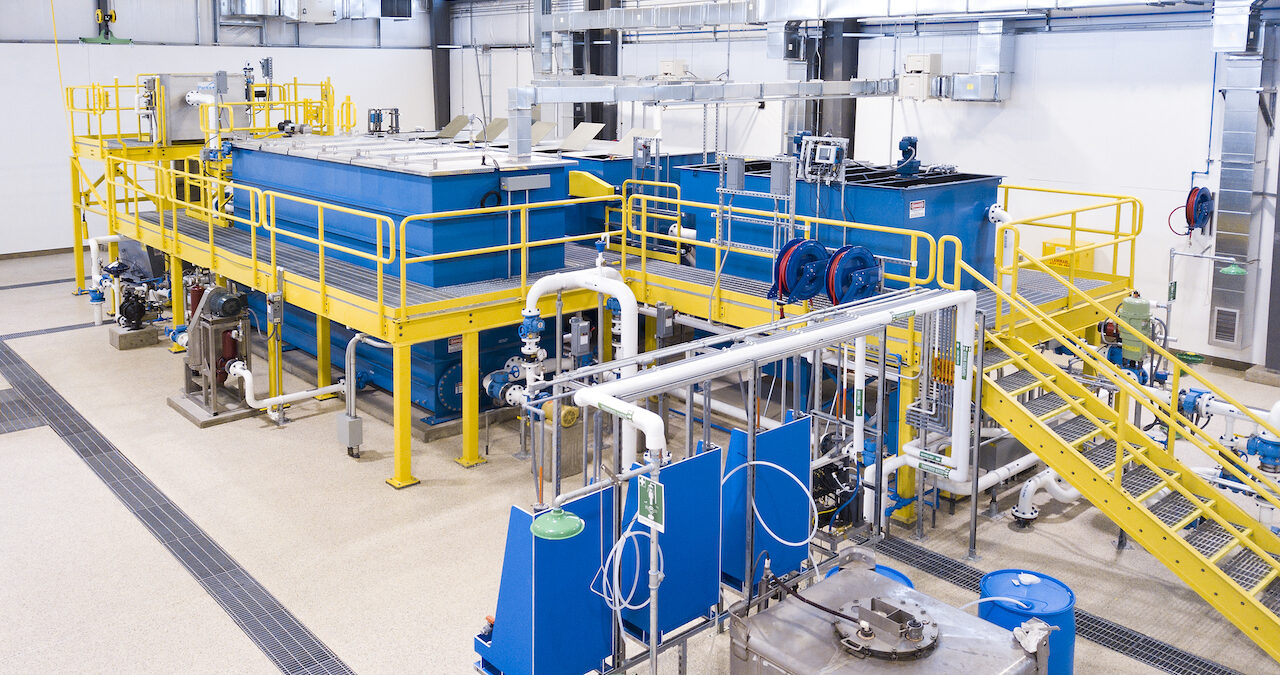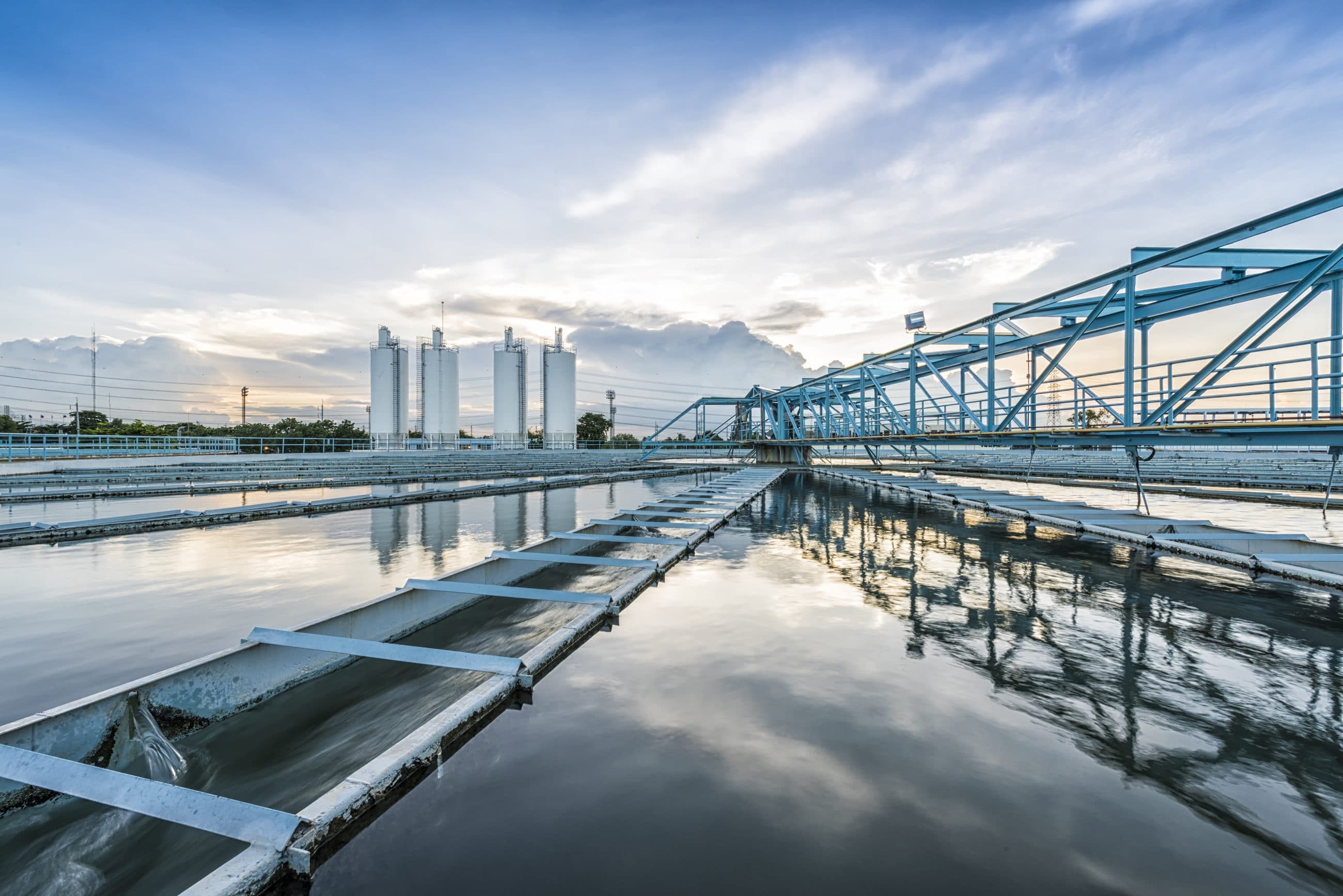Industrial Waste Water Treatment-- Lasting Solutions for Industrial Water Administration
Industrial Waste Water Treatment-- Lasting Solutions for Industrial Water Administration
Blog Article
Key Strategies in Industrial Waste Water Therapy Procedures
The therapy of commercial wastewater is a critical element of environmental monitoring, including an array of techniques designed to mitigate the effect of contaminants. From the fundamental physical methods that separate solids to the innovative chemical and organic procedures that target certain toxins, each technique plays an essential function in attaining water quality requirements. Additionally, developments in technologies such as membrane layer filtering and progressed oxidation processes supply innovative services for boosting therapy effectiveness. Recognizing just how these methods interconnect and their ramifications for sustainability raises crucial questions about the future of wastewater monitoring in market.
Physical Therapy Approaches
How effectively can physical therapy methods address the intricacies of industrial wastewater? Physical treatment techniques play a critical duty in the initial phases of wastewater administration, focusing mostly on the elimination of solids and large particulates. Methods such as purification, sedimentation, and flotation are crucial for minimizing the concentration of suspended solids, thus boosting the performance of succeeding treatment processes.
Sedimentation includes the gravitational settling of solids, permitting the splitting up of much heavier materials from the wastewater. This approach is specifically efficient in clearing up water prior to organic or chemical treatments. Filtering, on the other hand, makes use of different media to record particle issue, guaranteeing that smaller impurities are removed. This strategy can be customized to accommodate various sorts of commercial effluents, creating clearer effluent streams.
In addition, flotation protection techniques, which use air bubbles to lift put on hold solids to the surface area for removal, are reliable in treating wastewater with high focus of fats, oils, and greases. Generally, physical treatment approaches act as a crucial very first step in the comprehensive administration of industrial wastewater, making sure that the lots on subsequent treatment phases is decreased and improving total treatment effectiveness.
Chemical Therapy Techniques
While physical treatment methods lay the foundation for effective wastewater management, chemical therapy methods are important for addressing the extra complicated contaminants commonly discovered in commercial effluents. These methods make use of different chemical representatives to precipitate, counteract, or oxidize hazardous substances, making sure a more detailed removal of contaminants.
One typical approach is coagulation and flocculation, where chemical coagulants such as aluminum sulfate or ferric chloride are included to advertise the aggregation of put on hold particles. This procedure boosts solid-liquid splitting up, lowering turbidity and improving water high quality. In addition, neutralization processes are utilized to change the pH of wastewater, utilizing bases or acids to reduce the effects of acidic or alkaline streams, respectively.
Oxidation-reduction reactions play a vital function in derogatory natural pollutants and pathogens. Chemical oxidants like chlorine, ozone, or hydrogen peroxide are used to damage down complicated natural compounds, making them much less damaging or a lot more biodegradable. In addition, progressed oxidation procedures (AOPs) combine numerous oxidation strategies to enhance toxin elimination effectiveness.
Organic Treatment Procedures
The efficiency of wastewater treatment is substantially improved by organic treatment processes, which harness the all-natural metabolic activities of microorganisms to disintegrate raw material and eliminate contaminants. Industrial Waste Water Treatment. These procedures largely include cardio and anaerobic food digestion, each tailored for certain kinds of wastewater
Cardio therapy procedures utilize oxygen to sustain microbial growth, advertising the break down of organic contaminants into co2 and water. Usual techniques consist of activated sludge systems, where oygenation containers promote the mixing of wastewater with microbes, and dripping filters, which urge biofilm advancement on media surface areas.
On the other hand, anaerobic treatment processes take place in the absence of oxygen, using anaerobic germs to break down organic issue, resulting in biogas production, a renewable power source. Anaerobic digesters are commonly employed in industrial setups for this purpose, successfully reducing the volume of sludge while producing beneficial biogas.
The option of a biological therapy method depends upon wastewater characteristics, treatment objectives, and governing requirements. The combination of organic processes in wastewater therapy not only boosts toxin removal effectiveness yet also promotes sustainability by reducing chemical usage and sustaining source recovery.
Advanced Oxidation Processes

Common AOP strategies consist of Fenton's photocatalysis, ozonation, and reagent. Fenton's reagent, a mix of hydrogen peroxide and ferrous iron, catalyzes the development of hydroxyl radicals, try this site making it effective for treating wastewater containing phenolic substances and various other recalcitrant materials. Ozonation utilizes ozone as a powerful oxidant, with the ability of deteriorating a variety of organic toxins while concurrently disinfecting the effluent. Photocatalysis utilizes light-activated stimulants, such as titanium dioxide, to improve oxidation reactions and get rid of impurities.
AOPs offer a number of advantages, including minimized sludge production and the ability to deal with wastewater with high concentrations of natural toxins. The execution of AOPs requires careful factor to consider of operational parameters and cost-effectiveness, guaranteeing that these sophisticated strategies are appropriately integrated right into existing wastewater therapy systems.
Membrane Layer Filtration Technologies

Microfiltration is efficient for eliminating suspended germs and solids, while ultrafiltration targets smaller sized natural particles and viruses. Nanofiltration links the void between ultrafiltration and reverse osmosis, efficiently eliminating divalent ions and organic compounds. Reverse osmosis supplies the highest possible degree of filtration, utilized mostly for desalination and getting rid of mono-valent ions.
Membrane layer technologies offer countless benefits, consisting of reduced power usage contrasted to typical therapy methods, modular layout for scalability, and the potential for water recovery and reuse. Nevertheless, difficulties such as membrane fouling and the need for regular maintenance need to be resolved to make sure system effectiveness. On the whole, membrane purification modern technologies stand for an important component of contemporary industrial wastewater treatment approaches, basics advertising sustainability and resource conservation in water management.
Verdict
Finally, commercial wastewater treatment uses a varied selection of strategies, including physical, chemical, organic, and progressed methods. Each approach plays a vital duty in successfully dealing with numerous pollutants, improving water quality, and advertising resource sustainability. The integration of these methods fosters an extensive treatment approach, making sure that commercial effluents fulfill regulatory requirements while reducing ecological impact. Proceeded innovations in these techniques will better enhance the performance and effectiveness of wastewater treatment procedures in industrial settings.
The therapy of industrial wastewater is an essential aspect of environmental monitoring, involving an array of techniques developed to alleviate the influence of contaminants.Exactly how effectively can physical therapy approaches address the complexities of industrial wastewater?Advanced oxidation processes (AOPs) stand for a cutting-edge method in commercial wastewater therapy, made to efficiently deteriorate organic contaminants that are typically resistant to conventional therapy approaches (Industrial Waste Water Treatment).In conclusion, industrial wastewater therapy utilizes a diverse range of methods, consisting of physical, chemical, biological, and advanced techniques. Continued improvements in these methods will certainly further improve the efficiency and effectiveness of wastewater treatment procedures in industrial settings
Report this page